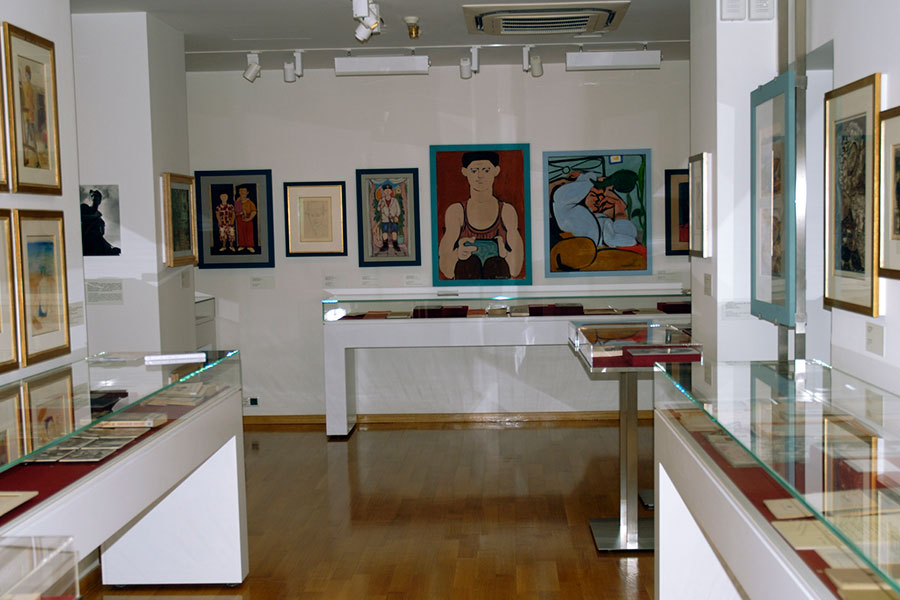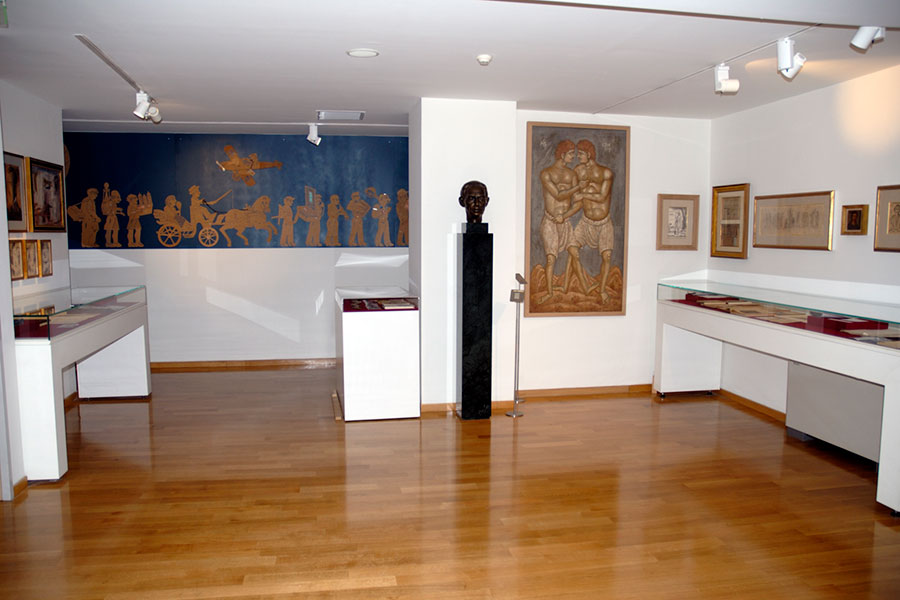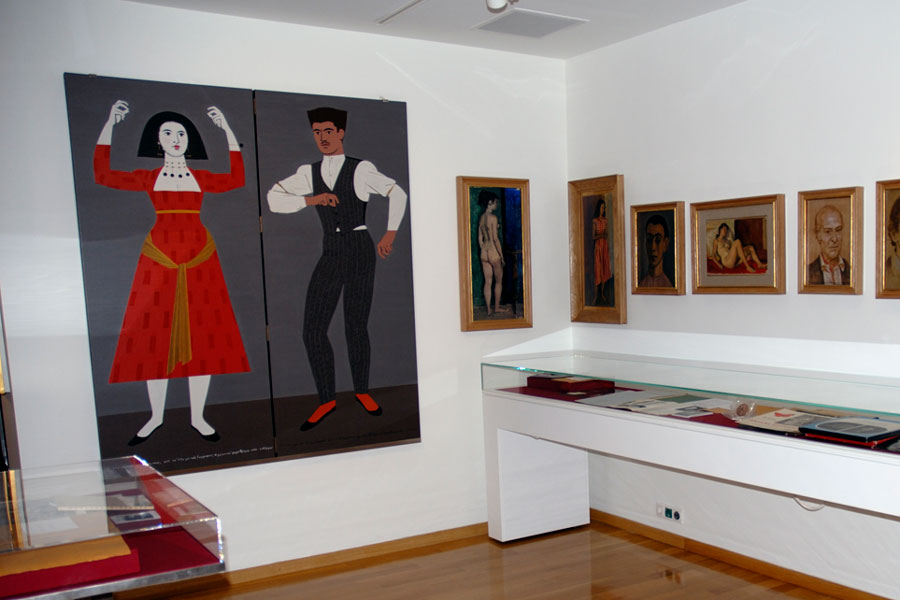The Ghika Gallery of the Benaki Museum offers both a compelling introduction to one of Greece’s definitive modern painters as well as a comprehensive overview of the Greek intellectual and creative world from the end of WWI to the eve of the dictatorship of 1967, illuminating the spiritual identity of contemporary Greece.
“I suppose I’ll never again experience the warmth of affection which surrounded me that morning as we embarked on our journey. Everybody was talking at once, the wine was flowing, the food was being replenished, the sun which had been veiled came out strong, the boat was rocking gently….” Henry Miller, “The Colossus of Maroussi,” p47
It’s scenes like this one that conjured the radiance of Greece for a generation of readers: we meet the sunwashed party, including the poet Giorgos Seferis and the literatus Giorgos Katsimbalis (the ‘Colossus’ of the title), on their way to visit the great painter Nikos Hadjikyriakos-Ghika at his ancestral home in Hydra. Miller captures Greece at a supreme moment, an era of impassioned intellectual and artistic activity, enlivened in part through dialogue with the European avant-garde, but far more by a convergence of monumental personalities.
The Ghika Gallery invites us into the center of that world, beginning with his modern home and atelier resting atop his family’s interwar apartment building at 3 Kriezotou Street, steps from Syntagma Square. The space is eloquent in its expression of both the era and the artist himself; Ghika was deeply involved in the design of this addition of the 1950s.
Even to the contemporary eye, the rooms are excitingly modern, with a utilitarian yet sensual use of concrete and the raw, sculptural presence of unconcealed beams and columns. Ghika’s hand is sensed throughout, in the poetic sense of space and light, in the cubist cement balcony railings cast to his own design.
The project was much praised in Greek and foreign architectural magazines of the time, as well as by such luminaries as Christian Zervos (Cahiers d’Art): “The overall effect is dynamic and discreet at the same time; and while totally modern in both concept and materials, it also evokes pre-classical, Minoan, Egyptian, Mycenaean, even Japanese and pre-Columbian art.”

© Ghika Gallery
The decor unites the diverse elements of his cultured world: east and west, folk art and fine antiques, and above all, art. We see in these rooms a life superbly lived: rare leather-bound volumes from his grandfather’s Hydra library, watercolors inspired by a trip to India (the height of his love affair with Barbara, his second wife). A table is charmingly painted with the names “Ghika-Barbara-Michali-Ioanna” (‘Michali’ and ‘Ioanna’ are the Leigh-Fermors – the writer Patrick and the photographer Joan were among the Ghikas’ closest friends).
With Barbara’s warm encouragement, Ghika arranged to give the building and all its contents to the Benaki Museum, already opening a gallery here during his lifetime. Master scenographer Dionyssis Fotopoulos incorporated elements of inspiration Ghika’s studio – notebooks, sketches, objects – into the displays.
Shining forth from the glorious paintings is the vision that so captivated Miller: “I saw a new Greece, the quintessential Greece which the artist had abstracted from the muck and confusion of time, of place, of history…. Ghika’s canvases are as fresh and clean, as pure and naked of all pretense, as the sea and light which bathe the dazzling islands.“ (“The Colossus of Maroussi,” p41)

© Ghika Gallery
The remaining floors of 3 Kriezotou St. are now the ideal setting for an exploration of modern Greek culture from the end of WWI and the Asia Minor catastrophe to the military dictatorship of 1967. It was a definitive and fertile period, encompassing, and often uniting, the worlds of visual arts, architecture, music, literature, cinema and the performing arts. Prominent in the comprehensive overview is the legacy of the “Generation of the 30s” and their quest for ‘Grécité’ – Greekness.
This expression of Greece’s matchless cultural heritage, often united with an embrace of modernism, was intoxicating; as the fullness and complexity of the nation’s cultural identity took shape, Greece was also making a splash on the international scene.
The Ghika Gallery deepens our appreciation of the luminous soul of Greece through an introduction to some 200 creators across all fields, highlighting the connections between the arts and the creators, as well as connections with the rest of Europe.
A fascinating archive of correspondence with prominent figures of the world of culture animates the narrative. Among them is a postcard of 1948, addressed to “Ghika (peintre)” and postmarked from Big Sur: “Dear Ghika, the “Colossus” has just come out in French. I have asked my Paris publisher to send you three or four copies – please distribute for me, to Katsimbalis, Seferis, Antoniou, will you? How are things there now? Henry Miller.”












